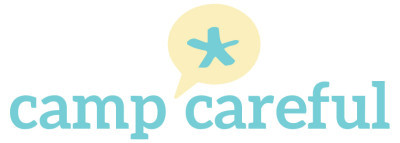child sexual abuse
What is child sexual abuse?
Any type of sexual activity with a minor, including touching and non-touching acts such as fondling, sexual intercourse of any kind (oral, anal, vaginal), exhibitionism, pornography, sex trafficking, obscene phone/digital/text/internet interactions.
Statistics about Victims:• 1 out of 7 girls and 1 out of 25 boys will be sexually abused by the time they turn 18.1
• Studies in recent past showed 1 out of 4 girls, and 1 out of 6 boys are sexually abused by age 18.
• Only ~38% of child victims disclose the fact that they have been sexually abused2.
Statistics about Perpetrators:
• ~30% of victims are abused by family members (20% were fathers, 10% were relatives)3
• ~60% were abused by people the family trusts3
• 40% of child sexual abuse victims are molested by older children3
• Perpetrators are people you know. Don’t look for the “monsters” or “sickos”.
Child sexual abuse and how society responds to it:
• Internal reporting is not enough. Law enforcement MUST be notified.
• Abuse thrives on silence. Speak up!
• Silence of 3rd parties
• Silence of parents
• Silence of victims
Parent tips and prevention strategies:
- Talk to your child frequently and openly about their body parts and include use of anatomic names. Use these words without embarrassment.
- Tell your child that s/he is in charge of their private zones and nobody is allowed to look at or touch theirs and vice versa.
- Tell your child to trust his feelings. If s/he has a bad or “uh-oh” feeling about a touch or situation, it is a bad touch or bad situation and s/he needs to remove her of himself from it.
- Remind your child that only you or the doctor should see/touch their private parts, and only if there is a reason or need to help. Other loved ones have no reason to see their private zones.
- Tell your child there are no “forever secrets” that s/he should keep from you.
- Tell your child to stay in a group when they are at camps or activities. Your child should never go alone with another counselor or camper where others can’t see them.
Resources:
- Advocacy Center for Crime Victims & Children is a nonprofit in Waco whose mission is to provide care and healing for children and adults who are victims of crime, particularly abuse (physical, sexual, verbal). 3312 Hillcrest Dr., Waco, TX 76708. (254) 752-9330.
- RAINN (Rape, Abuse, & Incest National Network) is the nation’s largest anti-sexual violence organization. RAINN created and operates the National Sexual Assault Hotline (800.656.HOPE and rainn.org) in partnership with more than 1,100 local rape crisis centers across the country and operates the DoD Safe Helpline for the Department of Defense. RAINN also carries out programs to prevent sexual violence, help victims and ensure that rapists are brought to justice.
- One with Courage was developed by Children’s Advocacy Centers of Texas, Inc. (CACTX), the nation’s largest state membership association of children’s advocacy centers. The One With Courage campaign aims to educate the public about the signs of sexual abuse, dispel generally accepted “myths” about this issue and provide communities with specific steps they can take to make a difference in a child’s life.
- Darkness to Light is a nonprofit with the mission of reducing the incidence of child sexual abuse through public awareness and education.
References:
1. Townsend, C., & Rheingold, A.A., (2013). Estimating a child sexual abuse prevalence rate for practitioners: studies. Charleston, S.C., Darkness to Light. Retrieved from www.D2L.org.
2. London, K., Bruck, M., Ceci, S., & Shuman, D. (2003) Disclosure of child sexual abuse: What does the research tell us about the ways that children tell? Psychology, Public Policy, and Law, 11(1), 194-226.
3. Finkelhor, D. (2012). Characteristics of crimes against juveniles. Durham, NH: Crimes against Children Research Center.
